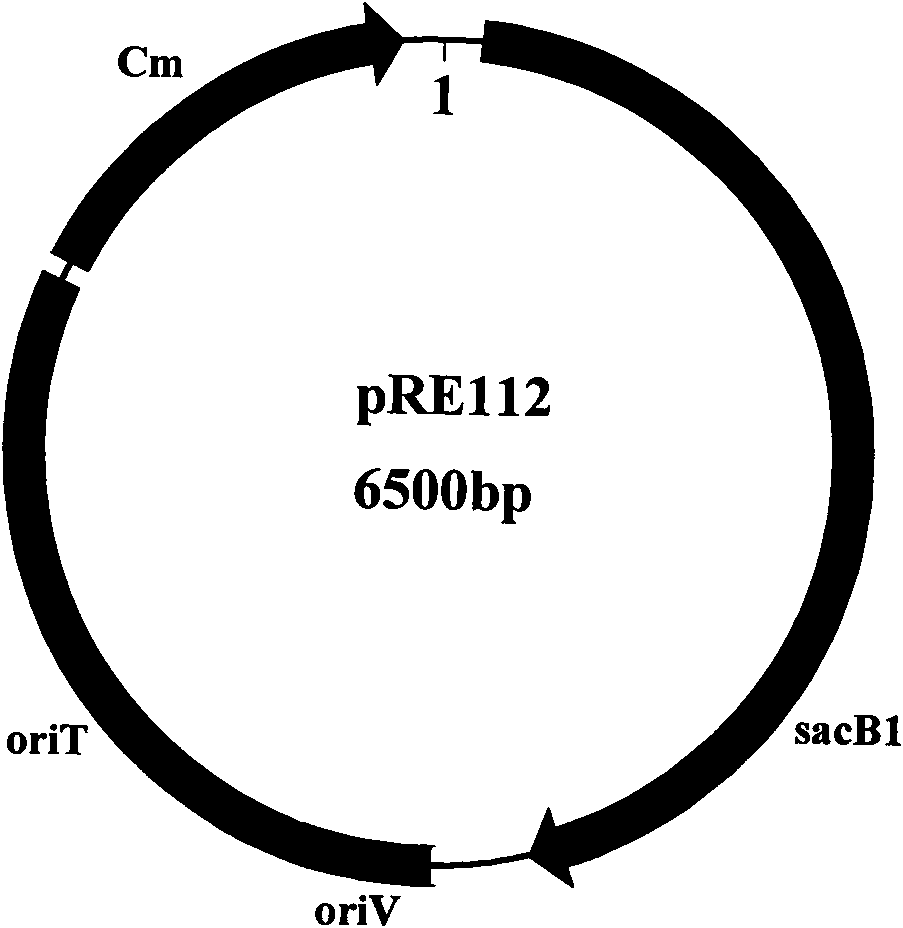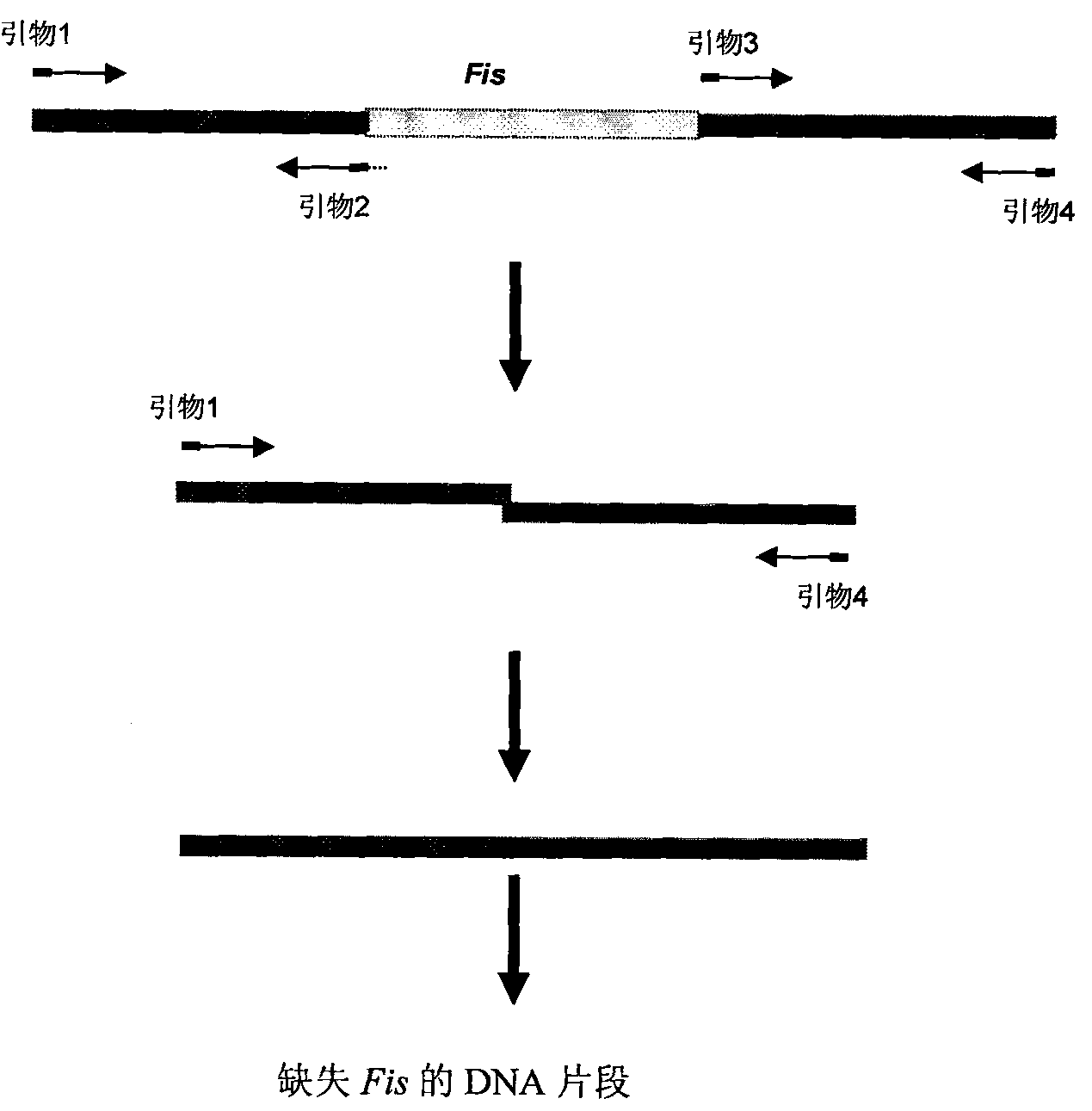Shewanella EPA synthetic gene cluster and gene engineering bacterium containing same
A technology of genetic engineering bacteria and synthetic genes, applied in the field of Shewanella EPA synthesis gene cluster, can solve the problems of reducing the fluidity of cell membranes and hindering the normal physiological functions of cell membranes
- Summary
- Abstract
- Description
- Claims
- Application Information
AI Technical Summary
Problems solved by technology
Method used
Image
Examples
Embodiment 1
[0034] Example 1: Screening of Escherichia coli comprising the WP3EPA gene cluster
[0035] Bacterial strains and culture conditions: WP3 is generally cultured at 15°C under normal pressure, and the medium used is 2216E medium. The clones of the cosmid library are generally cultured at 37°C under normal pressure, and the medium used is LB medium plus ampicillin at a final concentration of 100ug / ml. When the fatty acid content of the cosmid library clones was detected by GC-MS, the culture temperature of the clones was 20°C.
[0036] Construction of the WP3 genome cosmid library: the kit used was the pWEBTM cosmid cloning kit from EPICENTER. The entire cosmid library was constructed in accordance with the instructions provided by the kit. That is, the genomic DNA of large molecular weight is extracted and prepared according to the standard method of extracting total DNA, and dissolved in a certain amount of TE buffer. Next, the total DNA was mechanically fragmented to 30-45 ...
Embodiment 2
[0039] Example 2 Determination of the function of WP3 EPA synthetic gene cluster
[0040] Gene knockout method:
[0041] First, the DNA fragment of the target gene deletion was obtained by two rounds of PCR amplification, which was cloned into the suicide vector pRE112 to obtain the target gene deletion mutation vector pRE112-EPA. The pRE112-EPA was introduced into the diaminopimelic acid (DAP) auxotrophic Escherichia coli WM3064 by chemical transformation method, and then the plasmid pRE112-EPA was introduced from the donor strain WM3064 into WP3 by the method of combined transfer, and then passed two rounds DNA Homologous Recombination Screening to Obtain Genetic Engineering Strain WP3 with Target Deletion ΔEPA .
[0042] 1. Materials:
[0043] 1. PRE112 plasmid, the structure is shown in the appendix image 3 , in the figure:
[0044] Cm: chloramphenicol resistance gene;
[0045] oriT: mediates conjugation and plasmid transfer;
[0046] oriV: origin of replication (c...
Embodiment 3
[0071] The mensuration of embodiment 3 bacterial strain cultivation and bacterial fatty acid content
[0072] Bacterial strains and culture conditions: WP3 is generally cultured at 15°C under normal pressure, and the medium used is 2216E medium. The clones of the cosmid library are generally cultured at 37°C under normal pressure, and the medium used is LB medium plus ampicillin at a final concentration of 100ug / ml. When the fatty acid content of the cosmid library clones was detected by GC-MS, the culture temperature of the clones was 20°C.
[0073] 2216E Medium (1000ml)
[0074]Yeast extract 1g
[0075] Tryptone 2g
[0076] NaCl 34g
[0077] Fe 3 PO 4 0.1g
[0078] (1) Cultivation of WP3 under different temperature growth conditions: after overnight culture in normal 2216E medium (salinity 3.4%), the bacterial liquid was diluted 50 times into fresh medium, and placed in low temperature (4°C) and Cultivate at room temperature (20°C).
[0079] (2) Cultivat...
PUM
 Login to View More
Login to View More Abstract
Description
Claims
Application Information
 Login to View More
Login to View More - R&D
- Intellectual Property
- Life Sciences
- Materials
- Tech Scout
- Unparalleled Data Quality
- Higher Quality Content
- 60% Fewer Hallucinations
Browse by: Latest US Patents, China's latest patents, Technical Efficacy Thesaurus, Application Domain, Technology Topic, Popular Technical Reports.
© 2025 PatSnap. All rights reserved.Legal|Privacy policy|Modern Slavery Act Transparency Statement|Sitemap|About US| Contact US: help@patsnap.com



